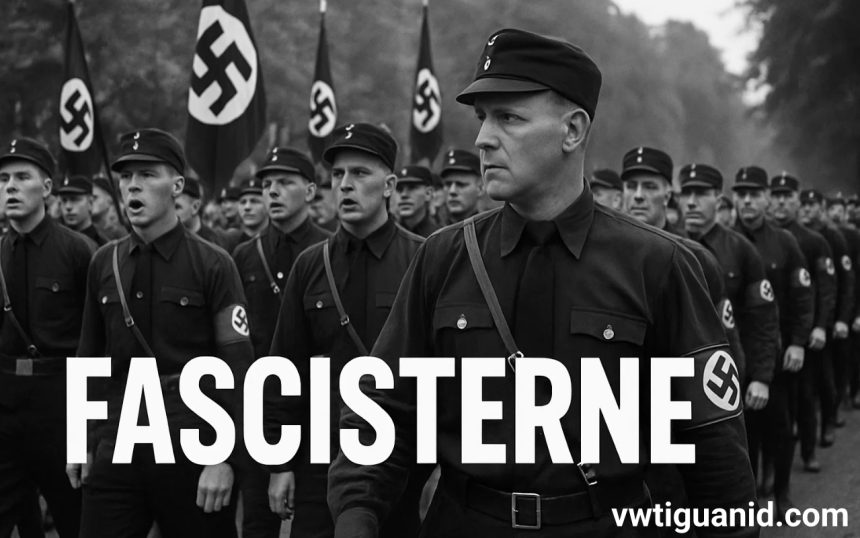The term fascisterne, derived from the word “fascism,” has been used to describe authoritarian political movements that emerged in the 20th century. These movements were known for their ultra-nationalism, dictatorial power, and suppression of opposition. While fascism is most closely associated with regimes like Mussolini’s Italy and Hitler’s Nazi Germany, the ideology behind fascisterne has taken various forms across nations and continues to influence political discourse today.
In this article, we will examine the historical background of fascisterne, analyze its core ideological principles, and evaluate its lingering influence in the modern world. Understanding fascisterne is crucial to recognizing the warning signs of authoritarianism in contemporary societies.
The Historical Roots of Fascisterne
Fascisterne originated in the early 20th century, a time of great political and social upheaval. Following World War I, many European countries were grappling with economic instability, national humiliation, and social unrest. These turbulent conditions created a fertile ground for extremist ideologies.
Mussolini and the Birth of Fascism
Benito Mussolini, an Italian political leader, is credited with founding the first fascist movement. In 1919, he established the Fasci Italiani di Combattimento, which later evolved into the National Fascist Party. The name fascisterne comes from the Latin fasces, a bundle of rods symbolizing strength through unity—a concept central to fascist ideology.
Mussolini’s regime emphasized total state control, nationalism, and militarism. Fascisterne under Mussolini rejected democracy, supported imperial expansion, and glorified the state over the individual.
Hitler and the Nazi Variation
Adolf Hitler adopted and modified the fascist model in Germany with the rise of the Nazi Party. Though Nazism had unique racial ideologies, its foundation was rooted in the same authoritarianism and ultra-nationalism that defined fascisterne.
The Nazi version of fascism placed even greater emphasis on racial purity and anti-Semitism, leading to the horrors of the Holocaust. This dark chapter in history remains one of the most powerful reminders of the dangers posed by fascisterne ideologies.
Ideological Foundations of Fascisterne
While variations exist, certain ideological components are commonly associated with fascisterne movements across different regions.
Authoritarianism and Anti-Democracy
One of the defining characteristics of fascisterne is its rejection of democratic institutions. Fascist regimes often dismantle parliaments, suppress free press, and eliminate political opposition. The aim is to centralize all power in a single leader or ruling party.
Extreme Nationalism
Fascisterne promotes an exaggerated form of patriotism that often leads to xenophobia and hostility toward minorities. The nation is glorified, and its culture is portrayed as superior to all others. This belief system fuels discriminatory policies and aggressive foreign relations.
Militarism and Violence
Another hallmark of fascisterne is the belief in violence as a legitimate tool for political gain. Fascist regimes often idolize military strength and engage in wars of conquest or suppression of internal dissent.
Propaganda and Mass Manipulation
Fascisterne relies heavily on propaganda to maintain control. Leaders craft narratives that demonize enemies and elevate their own image. State-controlled media and mass rallies become tools of psychological manipulation.
Fascisterne in Modern Times
Though the original fascist regimes of the 20th century have fallen, the ideology of fascisterne persists in various forms. In recent decades, many political analysts have warned of a resurgence of far-right authoritarian movements that echo fascist principles.
Neo-Fascism and Populist Movements
Neo-fascism is a term used to describe post-World War II political movements that adopt fascist ideals while avoiding explicit ties to historical regimes. These groups often oppose immigration, criticize liberal democracy, and support strongman leaders.
In some countries, populist parties have adopted rhetoric that mirrors fascisterne, emphasizing nationalism and blaming social issues on marginalized groups. While not all populists are fascist, the overlap in themes is a cause for concern.
Digital Propaganda and Online Radicalization
The internet has provided new tools for the spread of fascisterne ideology. Social media platforms allow extremist content to circulate quickly and widely. Online forums often become breeding grounds for hate speech, conspiracy theories, and calls to violence.
Governments and civil society groups are increasingly challenged with monitoring and combating digital fascisterne propaganda while balancing free speech rights.
Recognizing and Resisting Fascisterne
Understanding fascisterne is the first step in preventing its spread. Citizens, educators, and leaders have a responsibility to remain vigilant against authoritarian tendencies.
Education and Historical Awareness
Educating younger generations about the history of fascisterne is essential. Schools should teach the consequences of authoritarian rule and the importance of democratic values. When people understand how fascist regimes rise and operate, they are better equipped to resist similar trends in the future.
Defending Democratic Institutions
Institutions like independent media, free elections, and the rule of law are crucial bulwarks against . Citizens must advocate for transparency, accountability, and human rights. Weakening democratic structures often paves the way for authoritarian regimes.
Promoting Tolerance and Inclusion
Fascisterne thrives on division and hate. Counteracting it requires promoting inclusivity, diversity, and empathy. Communities must work together to reject scapegoating and build societies where all members feel valued.
Conclusion
The ideology of fascisterne may have originated over a century ago, but its influence lingers in various forms today. From its authoritarian roots in post-WWI Europe to its modern digital manifestations, represents a significant threat to democratic values and social harmony.
By studying the history and core principles of , society can recognize its warning signs and take proactive steps to counter its resurgence. The fight against fascism is not just a historical struggle—it is an ongoing challenge that demands awareness, vigilance, and collective action.
